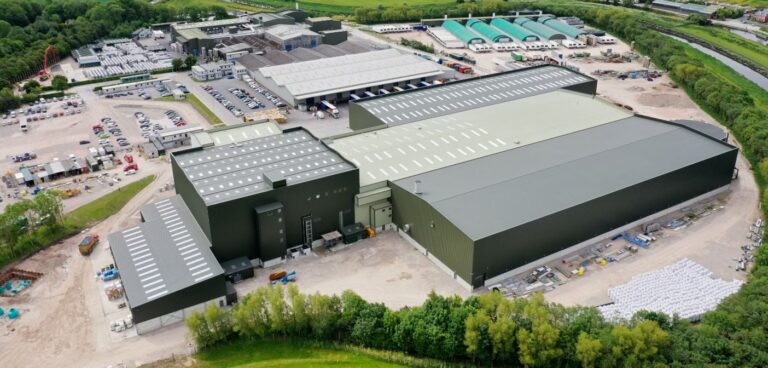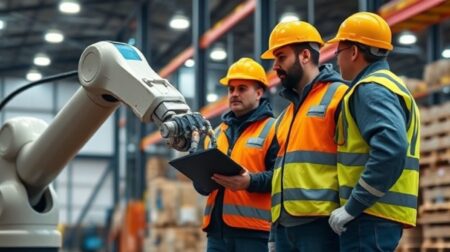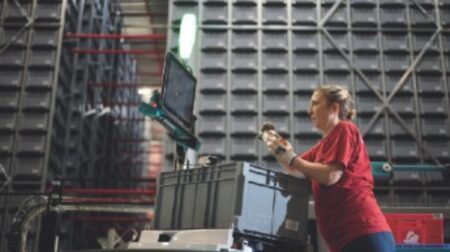GA Pet Food Partners has collaborated with technology organisations from around the world to robotise its Ingredients Kitchen. As Katie Searles discovers, it’s been a recipe that has cooked-up massive efficiency improvements…
For Lancashire-based GA Pet Food Partners, the decision to automate its 200,000ft2 warehouse originated from the desire to replace components of machinery that were no longer in use. After reaching out to the manufacturer to establish if the equipment could be redeployed elsewhere, that’s when inspiration struck.
The result of that brainwave is an £80m state-of-the-art Ingredients Kitchen that has seen the company collaborate with a range of technology suppliers to transform its original milling plant into a cutting-edge facility.
“The original milling plants we had were very old – I think the newest is about 21 years’ old now,” reveals Jayne Whittaker, engineering director for GA. “And the equipment was getting to the stage where it was somewhat dilapidated. It was looking for a refresh and to allow for the future.”
The Ingredients Kitchen has not come together overnight but has developed over time and many meetings with various equipment manufacturer and suppliers. This includes material handling systems company Daifuku and food processing machinery manufacturer JBT.
This collaborative approach enabled GA to transform its original Ingredients Kitchen, removing manual operations from the batching process as well as the stock management operations.
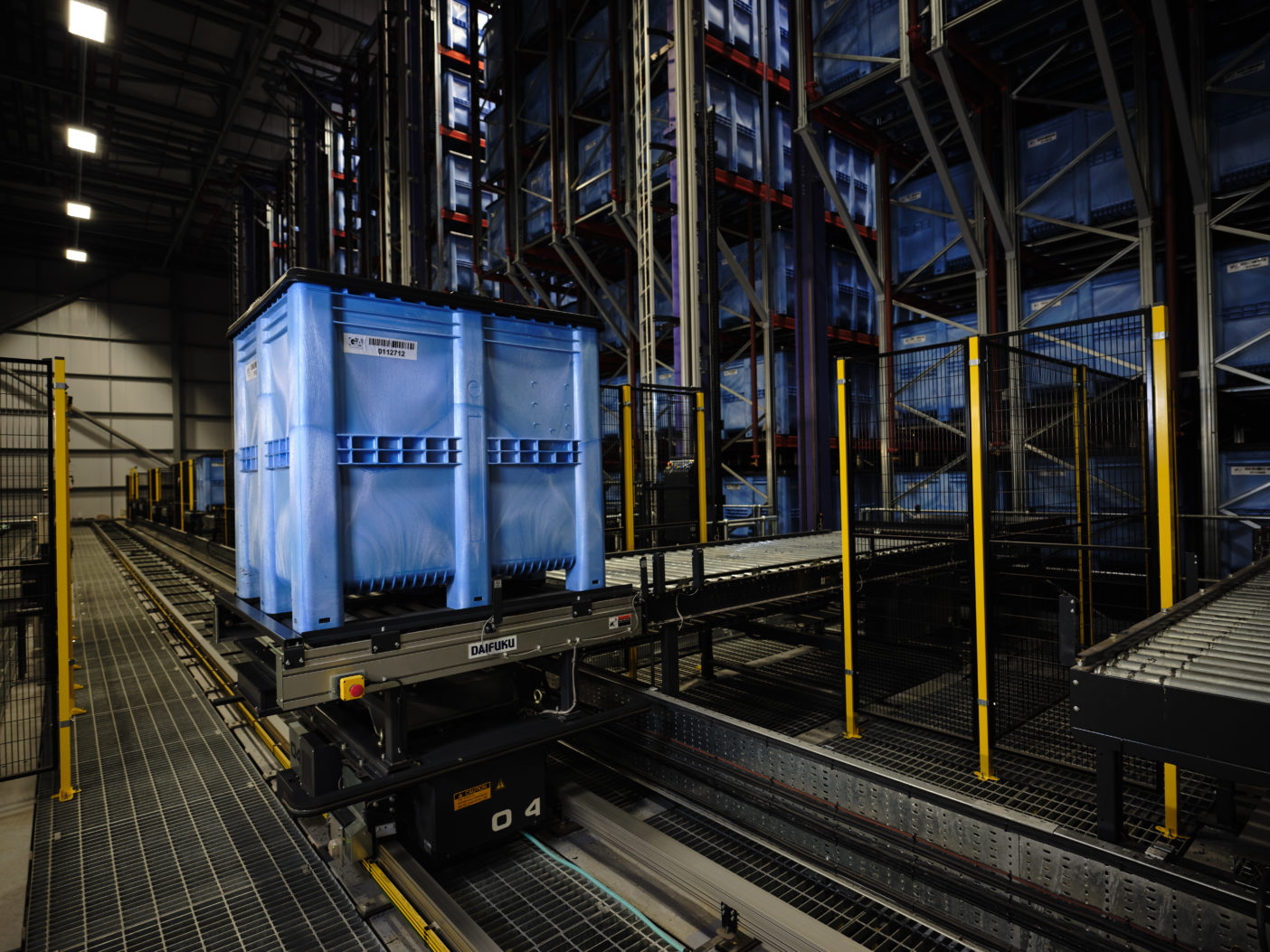
Quality Control
The upgrade was fundamental in guaranteeing the company’s principal aim – traceability. GA is working to ensure that its pet food recipes and products – all 700 ingredients and 800 formulas – are fully tracked and traced, for a degree of “transparency so everyone can see that traceability”, Whittaker explains.
When dealing with that number of ingredients, and producing 75,000 tonnes of pet food a year, GA felt compelled to create what Whittaker believes is “the most technologically advanced automated ingredients storage and selection facility in Europe”.
Three software companies were involved in automating the entire plant, with a vision to exclude any human error from a “very complex system”.
In the company’s ‘Larder’, a shuttle transfer vehicle system from Daifuku has been installed to transport blue finished containers (BFCs) to storage. These vehicles move on tracks in a continuous loop, collecting BFCs from the ‘Pantry’.
To enable the larder to hold 14,864 boxes, each containing 650-800kg of pet food ready for packing, Daifuku had to create a mammoth storage system featuring 12 cranes. The company has been working with GA since 2007 and has seen several iterations of its solutions installed over the years.
The partnership, similar to the solutions, have gradually grown over time and in 2016 the UK-based Daifuku design team worked to create a scalable solution.
“You can add a lot more capacity than it currently has just by adding vehicles,” comments Jeremy Lewis, engineering manager at Daifuku. “It’s quite a good starting point. With a bigger loop we can get anything up to 30 vehicles on there, enabling it to move six 700 pallets in or around [the facility], which is really quite a lot for a pallet-handling system.”
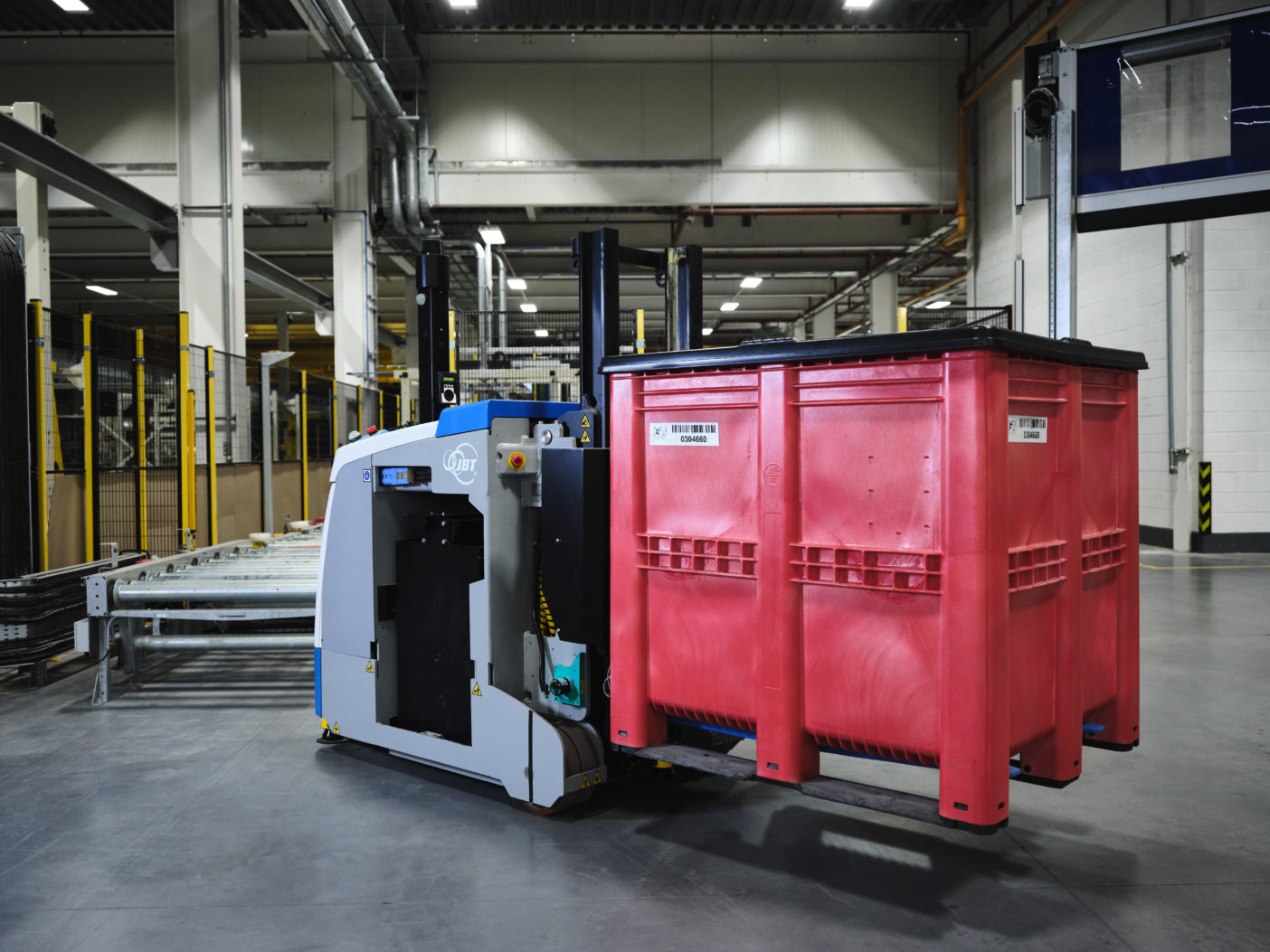
Mobile solutions
Working to this scale – and across two separate buildings – for the whole factory to run as a single system required a mobile solution. Enter Harry and Arthur, the company’s automated guided vehicles (AGVs).
Designed and built especially in Leicestershire by food and beverage machinery firm JBT, the AGVs are guided by laser strips installed to navigate them along a designated route. They are fully monitored by a control room using GA’s own proprietary IT software, which monitors, manages and controls every aspect of the Ingredients Kitchen.
Mark Stevenson, director of sales at JBT, explains that working with GA on the AGVs was more than just providing an autonomous free roaming horizontal transport solution. “All of the inherent benefits of having the software that manages these fleets and the tracking and traceability, which is inherent to any AGV system, fits right in with the challenges in the Ingredients Kitchen,” he says.
The system provides what Stevenson suggests is “absolute tracking and traceability of every single ingredient and every attribute that’s relevant to that ingredient”.
There are two types of these indoor AGVs in action at GA. “Henry and Arthur are distinguished by their carrying capacity and their lift height capacity,” Stevenson confirms.
Henry is capable of travelling at 2m/sec and weighs 1.5 tonnes, transferring containers to and from the pantry. Arthur, at 2.5 tonnes, covers 1.8m/sec, moving containers between the cellar and the station in preparation for extrusion.
For battery recharging, the AGVs move into a ‘keep-alive’ zone that enables them to maintain power while another vehicle replaces their battery with a fully charged one.
Room to grow
Akin to Daifuku’s shuttle system, the AGVs are designed to be scalable. “This idea of scalability is just woven within the fabric of the vision of GA,” reports Stevenson. “This fit between the various suppliers offers us the capability to integrate, along with the capability to scale and grow and be part of that vision.”
The panel agree that GA’s vision has been decades in the making. Although the term ‘smart factory’ is a buzzword right now, “if we buy into that buzzword, I would say that GA, [chairman] Roger Bracewell and his team have had that vision for 20 years. It is the absolute definition of smart factory,” Stevenson stresses.
“We were doing Industry 4.0 in 1999,” Whittaker adds.
And with the help of its partners and suppliers, GA fully intends to continue this vision, to continue to innovate. The family-owned pet food manufacturer’s ambitious expansion plans will ultimately result in a new dark store approach with a warehouse that one day is solely operated by robots.
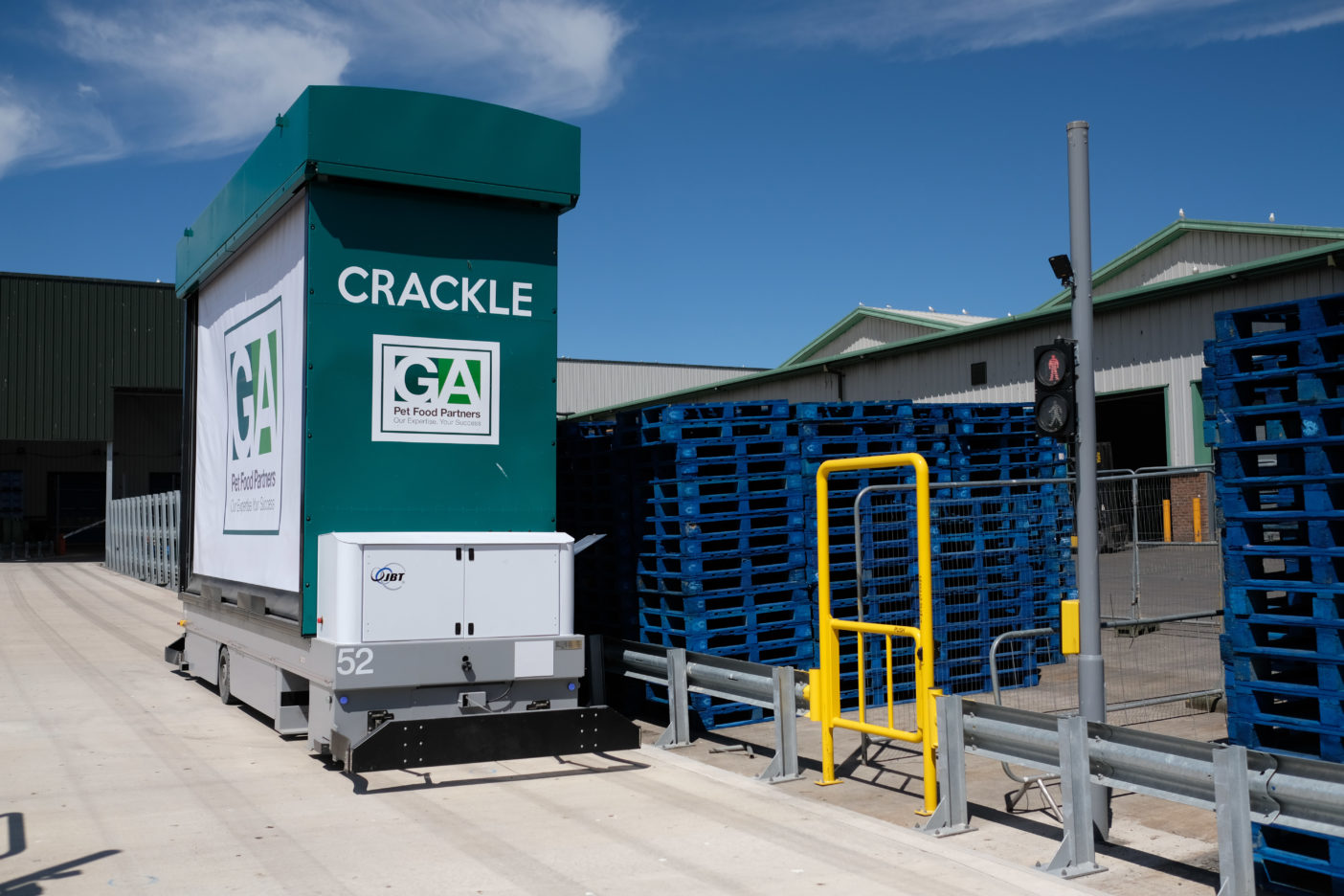
Europe’s first outdoor AGVs
Joining Arthur and Henry, GA’s indoor automated guided vehicles, are its Camel and Mules. These first outdoor AGVs installed in Europe are designed to operate like a small van or truck but using a magnetic gyro system for navigation.
The pet food manufacturer even built a road specifically for the outdoor AGVs featuring barriers and an in-house designed traffic light system. The route – which has heat pads to keep it frost-, ice- and snow-free – enables two-way traffic with three crossing paths for other site vehicles.
Jane Whittaker describes this route as a ‘diverse ecosystem’ with both personnel, site traffic and the outdoor AGVs all moving around the site.
After the larger of the indoor AGVs, Arthur, has followed its dedicated pathway around the far side of the pantry, completing its journey at a conveyor in the station area, the batch containers are loaded onto the Camel.
Travelling at up to 1m/sec, the Camel can transport up to three batch containers to pre-extrusion in just one journey. When a recipe has been manufactured, it is placed into a blue finished container and sent via a Mule, an AGV shuttle system, to the parlour area into the Ingredients Kitchen building.
So, it is really these outdoor AGVs that complete the cycle, providing a further link between all the site’s buildings – “the interconnectivity in the campus”, as Stevenson describes it.
“The outdoor AGV is where the cool stuff begins – to go look at it and see this outdoor vehicle running through the elements is really quite a sight.”
Yet again the design and implementation of the outdoor AGVs was a collaborative effort between GA and JBT. This came right down to what the roadway would look like as well as bigger concerns over the reliability of the system and required infrastructure.
“It’s been a very two-way, very respectful in both directions process, lots of ownership on every piece. Then we get into the details of best of breed technology, and what makes the most sense,” concludes Stevenson.

